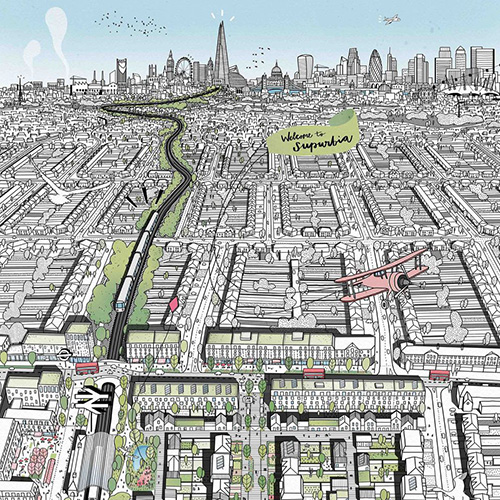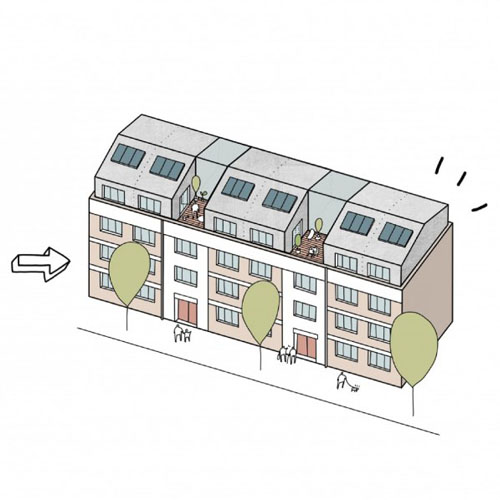Research
We invest in research as a practice both as an exercise in thought leadership, finding new solutions to persistent problems, and also in the course of project design, to find optimum solutions to client briefs. Our interdisciplinary structure enables us to bring diverse professional perspectives to bear on problem solving. We use social research to understand the communities we work amongst, technical research to refine modern methods of construction and policy research to find new approaches to urban problems.
We collaborate widely with institutes, academia and membership organisations on our research projects, notably with RIBA, Reading, Herriot Watt and Sheffield Universities, The Housing Forum. We are commissioned to undertake research for public clients and private organisations and have a particularly strong record on off-site manufacture.
We are committed to improving our knowledge and understanding through improving the feedback loop, learning from experience of completed projects. We invite all our clients to share key performance objectives for their projects with us and to participate in post occupancy evaluation to determine how well these have been met as well as measuring our shared contribution to minimising climate change.
The outcome of our research has been published widely and is available on this website to download from our publications section here.
Research
We invest in research as a practice both as an exercise in thought leadership, finding new solutions to persistent problems, and also in the course of project design, to find optimum solutions to client briefs. Our interdisciplinary structure enables us to bring diverse professional perspectives to bear on problem solving. We use social research to understand the communities we work amongst, technical research to refine modern methods of construction and policy research to find new approaches to urban problems.
We collaborate widely with institutes, academia and membership organisations on our research projects, notably with RIBA, Reading, Herriot Watt and Sheffield Universities, The Housing Forum. We are commissioned to undertake research for public clients and private organisations and have a particularly strong record on off-site manufacture.
We are committed to improving our knowledge and understanding through improving the feedback loop, learning from experience of completed projects. We invite all our clients to share key performance objectives for their projects with us and to participate in post occupancy evaluation to determine how well these have been met as well as measuring our shared contribution to minimising climate change. The outcome of our research has been published widely and is available on this website to download from our publications section here.
Supurbia
Supurbia is a strategy for intensifying London's suburbs that balances their inherent advantages with higher density and amenity value. Its approach is twofold: redeveloping local main streets and parades as mixed-use places with increased housing, improved service and amenity provision; and, enabling owner-occupiers to develop their land, creating rich diversities of housing.
As well as increasing housing supply and improving London's suburbs, the Supurbia concept has the capacity to liberate equity locked up in relatively poor quality private housing stock by facilitating home owners to participate in profitable development, which will also increase supply and improve neighbourhoods. The design-led approach, based on Local Development Orders and approved plot passports would guarantee a high quality outcome.
Starting with pilot studies in the hinterland of large scale urban regeneration schemes in London would enable local people to participate in the betterment of their neighbourhoods and thus become advocates for, rather than opponents of, urban intensification and new housing development, turning NIMBYism on its head or turning NIMBYs into YIMBYs (Yes – in my back yard!).
Home Performance Labelling
This study was conducted by HTA and BLP as part of the work towards its Home Performance Labelling pilot for the Housing Forum. A range of architects including Alison Brooks Architects, Levitt Bernstein, PRP and PTEa provided full BIM models for designs of new homes, from which the energy performance was calculated. Regulated energy costs were created using SAP, and estimates made from DECC benchmarks on non-regulated energy costs such as cooking and other consumer appliances. Surveys were done of a standard London Victorian terrace to generate similar data. A butterfly model was then applied to this data to devise the wider life-cycle costs. The maintenance and life cycle data was generated from BLP’s in-house costings, service lives and maintenance default data. The costs assumed a 60-year life cycle averaged to an annual figure. A notional service charge was included for flats.
Full details on the study can be found at homeperformancelabelling.co.uk.
Airspace
"We are delighted that Apex Airspace have received funding from the GLA to fund 500 affordable homes. The potential for rooftop development across London is substantial as our study to Apex Airspace have shown. 180,000 new homes is at most a conservative estimate. Rooftop development, like any other type of infill development, comes with its planning challenges, but exploring the potential of existing assets is a good starting position to keep communities in place. It is also a good way of improving existing buildings beyond what would be delivered if dependent only on a maintenance budget – existing residents can have the benefit of, for example, much needed new bin storage, access arrangements, improvements to the existing building and landscaping." Riette Oosthuizen, Partner




